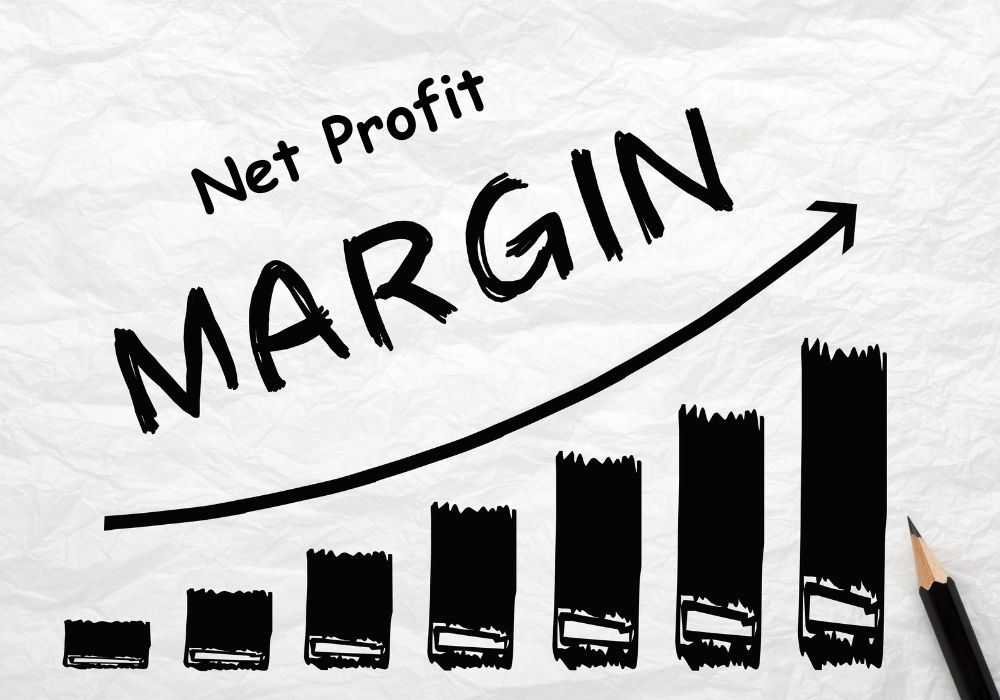- What’s Revenue Recognition?
- Why Revenue Recognition Isn’t a Walk in the Park
- The 5 Principles of Revenue Recognition
- Step 1: Identify the Contract with Your Customer
- Step 2: Pinpoint the Performance Obligations
- Step 3: Determine the Transaction Price
- Step 4: Allocate the Transaction Price to Performance Obligations
- Step 5: Recognize Revenue When (or As) You Deliver
- Beyond the Basics: Why Revenue Recognition Gets Tricky
- Long-Term Contracts and Progress Billings
- Subscriptions and Recurring Revenue
- Bundled Goods and Services
- Drawbacks
- Why This Matters?
- Wrapping It Up
Imagine you just landed a big sale—high-fives all around, and you’re ready to count that cash as revenue. But hold up! In accounting, it’s not as simple as “money in, revenue recorded.”
Nope, there’s a process called revenue recognition that acts like the bouncer at the club, making sure you don’t sneak that revenue onto your books too soon.
So, what’s the deal with revenue recognition? Why should you care, and how do you get it right? Let’s break it down in a way that’s easy to digest, walk through the five key steps, and toss in some extra tips to keep you in the loop.
What’s Revenue Recognition?
Revenue recognition is like the rulebook for when and how you get to say, “Yup, we earned that money!” It’s a big deal in accrual accounting, where you record revenue when you’ve earned it, not necessarily when the cash lands in your pocket.
Think of it like baking a cake—you don’t call it done until it’s out of the oven, even if you’ve already bought the ingredients.
This principle makes sure your financial statements tell the real story of your business, keeping things clear for investors, your bank, or anyone else snooping around your numbers.
The big shots at the Financial Accounting Standards Board (FASB) and the International Accounting Standards Board (IASB) set the rules with ASC 606 and IFRS 15, which rolled out in 2018.
These standards are like the global playbook for revenue recognition, ensuring everyone’s on the same page, whether you’re selling tacos or tech subscriptions.
Get it right, and your book is a masterpiece. Get it wrong, and you could be in for a world of hurt—think confused investors or even a slap on the wrist from regulators.
Why Revenue Recognition Isn’t a Walk in the Park
Revenue recognition isn’t as simple as adding up your sales and calling it a day. It’s more like solving a puzzle, especially when you’re dealing with tricky stuff like long-term contracts, discounts, or bundled deals. You can’t just wing it—you need a solid game plan.
That’s where the five-step model comes in, a clear roadmap to keep you from tripping over your own feet. Let’s dive into each step so you can wrap your head around it and handle it like a pro.
The 5 Principles of Revenue Recognition
Step 1: Identify the Contract with Your Customer
First things first: you need a contract. This could be a signed agreement, a handshake deal, or even an understanding that’s clear as day, as long as it’s legit and enforceable.
The contract spells out what you’re selling, what you’re getting paid, and who’s doing what. Whether you’re building a website or selling a fancy gadget, this is the foundation of the deal.
Here’s the kicker: the contract has to have substance. That means it’s gotta impact your cash flow, and your customer needs to be likely to pay up.
If they’re broke or flaky, you might not have a real contract yet. So, before you get too excited, make sure the deal’s solid and everyone’s ready to follow through.
Step 2: Pinpoint the Performance Obligations
Okay, you’ve got a contract—now what are you actually delivering? These are your performance obligations, the promises you’ve made to hand over goods or services.
It could be something simple, like delivering a pizza, or something ongoing, like a year of tech support for a software package.
Here’s where it gets fun: some contracts pack in multiple promises. Say you sell a laptop that comes with a warranty and some free software.
Each of those is a separate performance obligation. You’ve gotta break them down and treat them individually because you’ll record revenue for each one as you deliver. This keeps things from getting all jumbled up.
Step 3: Determine the Transaction Price
Next, you need to pin down the transaction price—how much you’re gonna get paid for the whole deal. Sounds easy, right? Not so fast.
You’ve gotta factor in stuff like discounts, rebates, or even bonuses for hitting deadlines. For example, if you’re renovating a house and there’s a bonus for finishing early, you estimate how likely it is you’ll snag that extra cash and include it in the price.
And don’t forget about the time value of money. If your customer’s paying you over a couple of years, you need to adjust the price to reflect what that money’s worth today.
It’s like making sure you’re not getting shortchanged just because the payment’s stretched out.
Step 4: Allocate the Transaction Price to Performance Obligations
Now that you’ve got the total price, it’s time to divvy it up among those performance obligations. Picture it like slicing a pizza—each obligation gets a piece of the price based on its standalone selling price, or what you’d charge for it on its own.
If you’re selling a phone with a case and a warranty, you estimate the value of each part and split the price accordingly.
This can get a bit hairy if the standalone prices aren’t obvious, like when you bundle a bunch of services together.
You might need to make educated guesses based on market prices or your costs. The goal is to make sure each piece of the puzzle gets its fair share of the revenue pie.
Step 5: Recognize Revenue When (or As) You Deliver
Here’s the moment you’ve been waiting for: actually recording the revenue. You do this when (or as) you satisfy each performance obligation—when the customer gets their hands on the goods or services.
This could be a one-and-done deal, like handing over a new TV, or it could happen over time, like providing monthly internet service.
For example, if you sell a bike, you record the revenue when the customer rides it out of the shop.
But if you’re running a streaming service, you spread the revenue out each month as you keep the content flowing. The trick is matching the revenue to when you actually deliver the value.
Beyond the Basics: Why Revenue Recognition Gets Tricky
These five steps sound pretty straightforward, but life loves to throw in a few curveballs. Let’s talk about some scenarios that can make revenue recognition feel like herding cats.
Long-Term Contracts and Progress Billings
If you’re working on something big, like building a bridge or coding a custom app, the project might take months or even years.
You might get paid in chunks along the way, but you don’t record all the revenue upfront. Instead, you use the percentage of completion method—figuring out how much of the job is done and recognizing that chunk of revenue.
For example, if you’re halfway through a construction project, you might record half the revenue, even if you haven’t seen all the cash yet.
Subscriptions and Recurring Revenue
Running a subscription business, like a gym or a streaming platform? You’re delivering value over time, so you spread the revenue out evenly across the subscription period.
But if you throw in a free trial or a discount, you’ve gotta spread the total price across the whole period, which can mean some extra math, Hiking number-crunching. It’s all about keeping things fair and square.
Bundled Goods and Services
When you sell a package deal—like a gaming console with games and a controller—allocating the transaction price can be a headache.
You need to estimate the standalone value of each piece to split the price right. Mess this up, and you could record revenue too early or too late, which throws your books out of whack.
Drawbacks
Even with a solid plan, it’s easy to slip up. Here are a few traps to steer clear of:
- Counting Your Chickens Too Soon: Don’t record revenue before you’ve delivered the goods or services. Always make sure the customer has control first.
- Missing Variable Payments: Discounts, refunds, or bonuses can mess with your transaction price. Estimate these upfront and tweak them as needed.
- Fuzzy Contracts: Vague terms can lead to confusion or delays. Be super clear about what’s being delivered, when, and for how much.
To keep things tight, use good accounting software, document everything, and don’t be afraid to call in an expert if you’re in over your head. Regular check-ins on your process can stop small mistakes from turning into big problems.
Why This Matters?
Revenue recognition isn’t just about following the rules—it’s about showing the world what your business is really doing.
Getting it right builds trust with investors, lenders, and regulators, proving you’ve got your house in order. It also helps you make smart moves, like deciding whether to expand or cut costs.
With ASC 606 and IFRS 15, everyone’s playing by the same rules, whether you’re a corner store or a multinational corporation. Screw it up, and you could lose credibility or even face penalties. Nail it, and you’re golden.
Wrapping It Up
Revenue recognition might feel like a maze, but with the five-step model, you’ve got a clear path forward.
Lock in the contract, spot your obligations, set the price, split it up, and record the revenue as you deliver. Stay sharp, watch out for complications, and keep your books clean as a whistle.
By getting a handle on revenue recognition, you’re not just checking boxes—you’re setting your business up for success.
So, the next time you close a deal, you’ll know exactly when to celebrate and when to hit “record” on that revenue. Here’s to crushing it and keeping your financials rock-solid!







